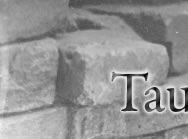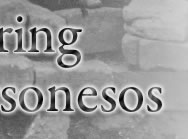| Report of the excavations of farmhouse at kleros no. 9 in 1975 |
| Year: 1975 |
|
Author
Saprykin S. U.
|
|
Description
In 1975, the Gerakleyskaya Expedition of the Institute of Archaeology of the Academy of Sciences of the USSR and the Historic Faculty of the Moscow State University in cooperation with N. K. Krupskaya Moscow Regional Pedagogical Institute and the State Chersonesos Historical and ArchaeologicalMuseum continued the excavations in the Gerakleyskiy Peninsula. TheExpedition was headed by Doctor of History I. T. Kruglikova, and the team of the Moscow State University that immediately excavated the farmhouse at kleros no. 9 was headed by S. Yu. Saprykin. The team included teachers and students on training from the Historic Faculty of the Moscow State University. The main attention of the team was concentrated on the studies of the farmhouse itself. 1974 excavations allowed us to discover the limits of the farmhouse only very generally. That is why the main goal of the team in 1975 was to discover the ground plan of the farmhouse, to determine the time of its foundation and fall, as well as to establish chronological frames of reconstructions of the farmhouse. The plan of the excavation trench, lines of grids and their numbers remained the same as in the past year. This year excavations confirmed the conclusion that there were three periods of constuction in the farmhouseand allowed us to discuss the final borders of the farmhouse with more details. Similarly to the past year, the question of the time when the farhouse had been established remained open. In spite of the fined of Sinopean roof tile with the stamp from the fourth century BC, no other data of the appearance of the farmhouse in this period has been yet received. It seems that it would be more correct to date the period when the farmhouse was established from the turn of the fourth and third centuries BC. File no. 1772/1, covering 33 pages.
|





